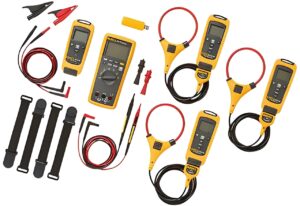
Salesforce
With automation revolutionizing software testing, many people wonder if manual testing has become obsolete. As we navigate through 2025, this question becomes increasingly important for businesses investing in Salesforce. Let’s explore whether manual Salesforce testing still has a place in modern quality assurance strategies.
The Current State of Salesforce Testing
In 2025, testing strategies have evolved significantly. Automated testing tools are more sophisticated, accessible, and affordable than ever before. However, the testing landscape isn’t as simple as choosing between manual and automated approaches—it’s about finding the right balance.
Understanding Manual Testing’s Role
Manual Salesforce testing involves human testers interacting with the platform just as real users would. They click buttons, enter data, navigate menus, and verify that everything works correctly. This hands-on approach has been around since the beginning of software development.
Where Manual Testing Still Excels
Exploratory Testing and User Experience
Automated tests follow predetermined scripts, but human testers can explore the system creatively. They notice things that scripts can’t catch—confusing layouts, unclear error messages, or workflows that technically work but feel awkward to use.
Think about user experience: a button might function perfectly from a technical standpoint, but a human tester notices it’s positioned poorly or uses confusing language. These subtle usability issues significantly impact user satisfaction but are difficult to catch with automation.
Visual and Design Verification
Does your Salesforce interface look right? Are elements properly aligned? Do colors display correctly across different screens? Human eyes excel at catching visual inconsistencies that automated tests might miss.
In 2025, with Salesforce’s increasingly customizable interfaces, visual verification remains crucial. While automated visual testing tools exist, they can’t match human judgment about whether something “looks right” or feels professional.
The Irreplaceable Human Element
Intuition and Critical Thinking
Experienced testers develop intuition about where problems might hide. They ask questions like “What if someone tries this unusual combination?” or “How might users misunderstand this feature?” This critical thinking goes beyond what automated scripts can achieve.
When testing complex business processes, human testers understand the business context in ways that automated tests cannot. They recognize when something might be technically correct but still problematic for real-world use.
Adaptability to Change
Salesforce platforms evolve constantly. When business requirements change or new features get added, human testers can quickly adapt their approach. They don’t need someone to reprogram them—they simply adjust their testing strategy based on new information.
This adaptability is particularly valuable for businesses undergoing rapid change or experimentation, much like companies featured on business north west that need flexible testing approaches as they grow and pivot.
Manual Testing for New Features
Initial Feature Validation
When your team develops a brand new Salesforce feature, manual testing often makes more sense initially. Writing automated tests before you fully understand how a feature should work wastes time. Human testers can provide immediate feedback during development, helping shape the feature correctly from the start.
Prototype and POC Testing
Testing prototypes and proof-of-concept implementations requires flexibility that manual testing provides. You’re not yet ready to invest time in creating automated tests for something that might change dramatically or get scrapped entirely.
Complex Scenario Testing
Multi-System Workflows
Some business processes involve Salesforce plus several other systems, each with complex interactions. Manual testers can effectively evaluate these intricate workflows, understanding when problems arise from Salesforce versus other system components.
Edge Cases and Unusual Situations
While automated tests can check predetermined edge cases, human testers discover unexpected edge cases through exploration. They try things that nobody specifically thought to test, sometimes uncovering critical issues that would have affected real users.
The Cost-Benefit Analysis
When Manual Testing Is More Economical
For testing that happens infrequently—like major version upgrades or one-time customizations—manual testing may be more cost-effective than developing and maintaining automated tests. The initial investment in automation doesn’t always make sense for tests you’ll rarely run.
Quick Smoke Testing
Sometimes you need quick verification that basic functionality works after a minor change. An experienced tester can quickly smoke-test critical features faster than setting up and running automated test suites.
Compliance and Regulatory Requirements
Audit and Documentation Needs
Some industries require human verification for compliance purposes. Regulatory bodies may mandate that a qualified person reviews and signs off on testing results, not just an automated system. In these cases, manual testing isn’t just relevant—it’s legally required.
Security Testing
Security testing particularly benefits from human expertise. Automated security scans are valuable, but experienced security testers think like attackers, trying creative approaches to breach security that automated tools might not test.
The Hybrid Approach in 2025
Combining Strengths
The most successful testing strategies in 2025 combine automated and manual testing. Automated tests handle repetitive checks, regression testing, and performance monitoring, while manual testers focus on exploratory testing, usability evaluation, and complex scenario validation.
This hybrid approach maximizes efficiency while maintaining the quality benefits that human insight provides.
Strategic Test Assignment
Smart organizations strategically assign tests based on their nature. Repetitive, high-volume tests go to automation. Tests requiring judgment, creativity, or business context remain manual. This division optimizes both speed and quality.
Training and Skill Development
The Evolving Tester Role
Manual testers in 2025 need different skills than their predecessors. They should understand automation capabilities and work collaboratively with automation engineers. Modern manual testers combine technical knowledge with business understanding and user empathy.
Career Paths for Manual Testers
Rather than becoming obsolete, manual testers are evolving into quality assurance strategists. They guide testing approaches, identify what should be automated versus manually tested, and ensure overall quality through comprehensive test planning.
Real-World Challenges
Much like how social media requires human oversight despite sophisticated algorithms (as situations on influencers gone wild demonstrate), Salesforce testing benefits from human oversight despite advanced automation tools. Some things simply require human judgment and contextual understanding.
Mobile and Cross-Platform Considerations
Device-Specific Testing
With Salesforce mobile apps and responsive designs, testing across different devices remains important. While automated tools can test functionality, human testers better evaluate the actual user experience on various phones, tablets, and desktop configurations.
Accessibility Testing
Ensuring Salesforce is accessible to users with disabilities requires human testers who can evaluate whether assistive technologies work well with your implementation. Automated accessibility testing catches some issues, but comprehensive accessibility evaluation needs human involvement.
The Future of Manual Testing
Augmented by AI, Not Replaced
Looking forward, AI and machine learning are enhancing manual testing rather than replacing it. AI-powered tools can suggest test cases, identify patterns, and even predict where bugs might occur—but human testers make the final decisions and conduct the actual exploration.
Quality Advocacy Role
Manual testers increasingly serve as quality advocates, representing user interests throughout the development process. They ask the questions that prevent problems before they occur and ensure that Salesforce implementations truly meet business needs.
Making the Decision for Your Organization
Factors to Consider
- Your Salesforce complexity and customization level
- How frequently you update your system
- Your budget and resource availability
- Regulatory and compliance requirements
- The criticality of your Salesforce operations
- Your team’s technical capabilities
Conclusion
Is Manual Salesforce Testing Still Relevant in 2025? Absolutely. While automation has transformed testing practices, manual testing remains valuable and necessary. The key isn’t choosing between manual and automated testing—it’s leveraging both strategically.
Manual testing brings irreplaceable human qualities: intuition, creativity, critical thinking, and business understanding. These qualities ensure that your Salesforce platform not only works correctly but provides an excellent user experience that automated tests alone cannot guarantee.
As we move further into 2025 and beyond, the most successful organizations will be those that recognize manual testing’s continued value while embracing automation where it makes sense. The future of Salesforce testing isn’t automated or manual—it’s intelligently hybrid, combining the best of both approaches to deliver exceptional quality and user satisfaction.
| Testing Aspect | Manual Testing Advantage | Best Use Case |
|---|---|---|
| User Experience | Human intuition and judgment | Initial feature evaluation |
| Visual Design | Natural pattern recognition | UI/UX verification |
| Exploratory Testing | Creative problem discovery | New feature exploration |
| Complex Workflows | Business context understanding | Multi-system processes |
| Accessibility | Real user perspective | Compliance verification |
| Edge Cases | Unexpected scenario identification | Security and stability |
| Adaptability | Quick response to change | Agile development environments |




